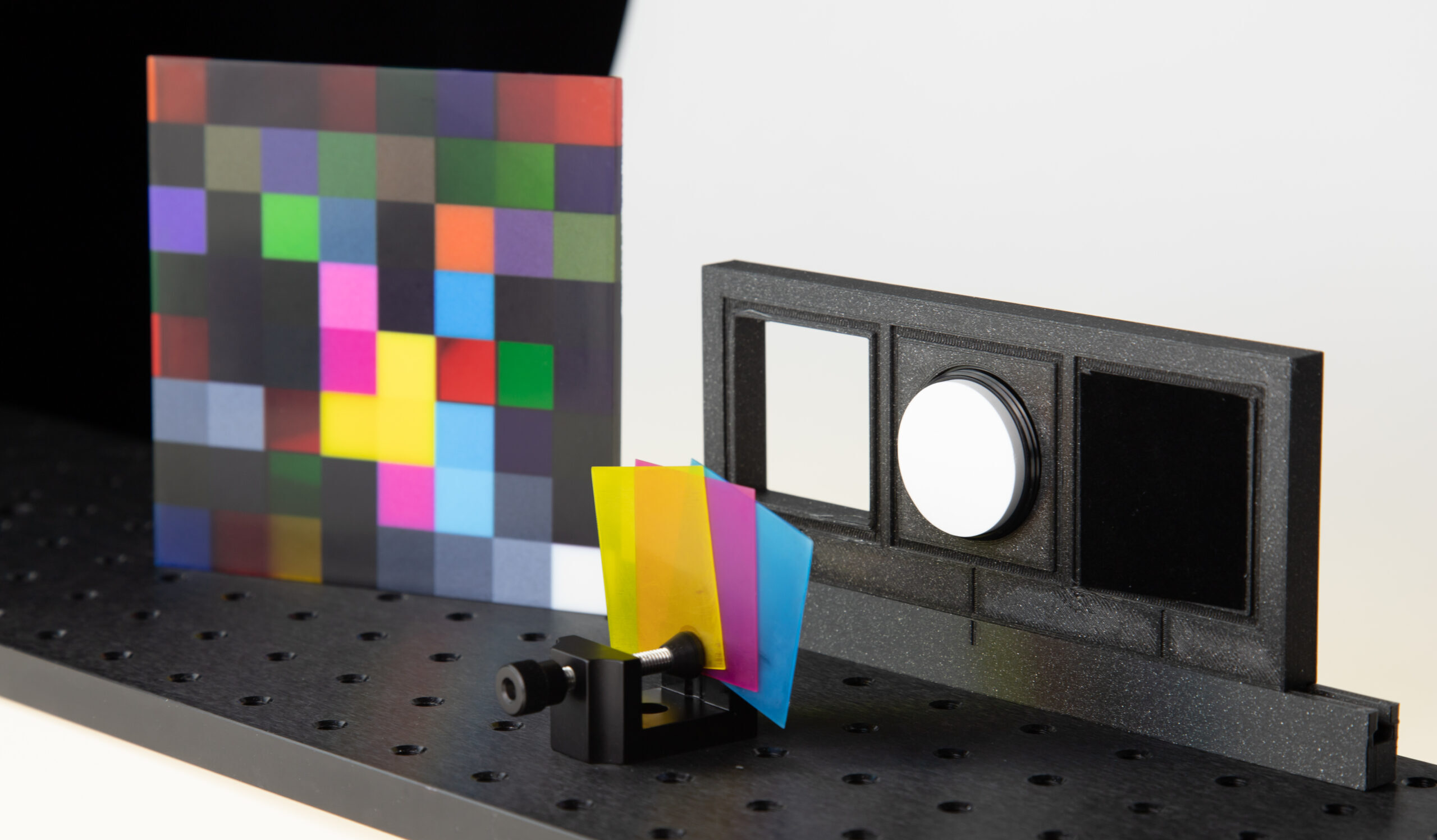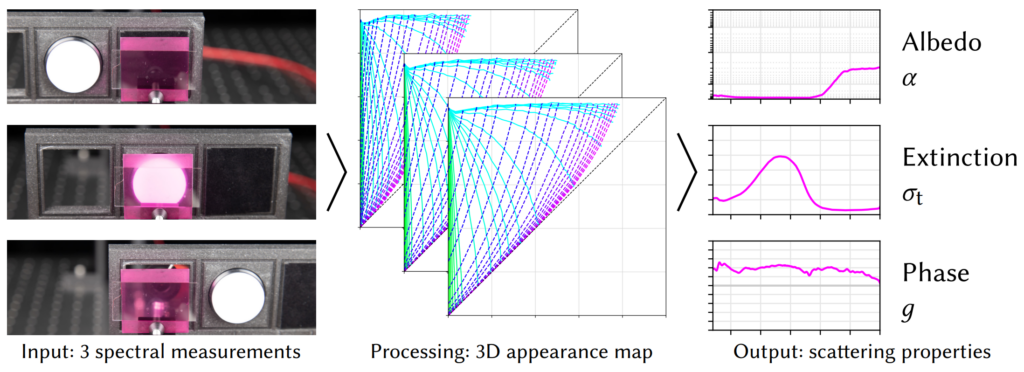High-level overview
- Input: A thin material sample (solid, or liquid in a cuvette) is placed in a holder, and it is illuminated and measured with a spectrometer in three simple configurations:
1) front diffuse illumination + black background,
2) front diffuse illumination + white background,
3) collimated beam from the back.
All these steps only take a minute to measure, and are easy to setup and calibrate. - Processing: We found and constructed a simple mapping between material appearance and its bulk optical properties. This mapping is generated in three dimensions, and is used to fit the material properties to the spectral intensities from the previous step.
- Output: The processing results in high-resolution spectrally resolved: single-scattering albedo, extinction coefficient [mm-1], and phase function anisotropy. Or alternatively, absorption and scattering coefficients [mm-1]. These can be directly used as parameters in volumetric rendering and full-color 3D printing optimization pipelines.
Video overviews
Short video (5 minutes)
Long video (16 minutes)
Short video (5 minutes)
Long video (16 minutes)

